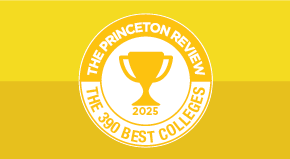How to Help Your Students Get the Most Out of the PSAT®
This past October your students and teachers gave up almost 4 hours of their school day to take the PSAT/NMSQT. Scores are now back for you, counselors, and will be available for your students to access online next week.
Here are a few suggestions on helping your students get the most from their experience:


- Use the Online Score Report: Encourage all students to create a College Board account and view their online score report—accessible via their computer, tablet, or phone. The report will not only tell them their score but will allow them to review individual questions and ask teachers for help with the ones they got wrong. Make sure students understand that the PSAT is exactly like the SAT®, so reviewing questions and targeting specific skills will be the best way for them to improve their score.
- Encourage Students: Use scores to encourage students to enroll in AP, IB, or dual enrollment courses. Colleges look at whether students challenged themselves in high school, so a strong PSAT score plus a word from their counselor or teacher could be exactly the nudge a student needs to enroll in these courses and set themselves up for greater success during the application season.
- "Ignore" the Benchmarks: College Readiness Benchmarks are average-average-average, but your students aren’t. Benchmarks look at a range of courses (e.g., Algebra to Calculus) across a range of institutions (e.g., a 2-year local community college to an elite science/technology college) and determine when a "typical" student will get a C in those courses. That provides a nice single number, but very little information relevant to each student. Instead of looking at benchmarks, students should look at the typical range of SAT scores at the institutions and programs they’re considering.
In addition to the range of information and resources available to individual students, the counselor reporting portal provides useful information for your school. Many schools use scores to ensure all students are getting access to challenging courses. Teachers can look at performance across all of their students to determine if there are certain topics that seemed to be particularly challenging for their students or pull up individual questions to help students understand how each lecture might relate the PSAT and SAT.
With the release of PSAT scores, you now have a wealth of information at your disposal to help your students succeed. With the right guidance, your students will be one step closer to their college dreams.
For more information on how you can help your students, check out our Counselor Resources page.
ABOUT STACY CALDWELL
Stacy Caldwell has dedicated her career to the development and distribution of innovative educational and curriculum-enhancing tools, opening access to students from every background, and advancing the use of technology and psychometrics in instruction and evaluation.
She joined The Princeton Review in July of 2016 as the Chief Product Officer and is responsible for the continued innovation and expansion of the full range of programs offered. Prior to joining The Princeton Review, Stacy spent 6 years at The College Board, where she led the SAT and PSAT programs during their most recent major redesign efforts; and 8 years at SCORE! Educational Centers, where she was responsible for building and delivering a full range of education programs for students in grades K–8.
Test names are the registered trademarks of their respective owners.

Explore Colleges For You
Connect with our featured colleges to find schools that both match your interests and are looking for students like you.
Top Colleges for Game Design
Are you an aspiring video game designer? Launch your gaming career at one of these top 50 programs.
Southern New Hampshire University Online Program
SNHU students complete undergrad degrees in one of 150+ programs or majors on their own time with flexible class schedules. SNHU makes earning an undergraduate degree and furthering your education accessible and affordable.
Best 390 Colleges
168,000 students rate everything from their professors to their campus social scene.

Explore Colleges For You
Connect with our featured colleges to find schools that both match your interests and are looking for students like you.
Top Colleges for Game Design
Are you an aspiring video game designer? Launch your gaming career at one of these top 50 programs.
Southern New Hampshire University Online Program
SNHU students complete undergrad degrees in one of 150+ programs or majors on their own time with flexible class schedules. SNHU makes earning an undergraduate degree and furthering your education accessible and affordable.
Best 390 Colleges
168,000 students rate everything from their professors to their campus social scene.

Explore Colleges For You
Connect with our featured colleges to find schools that both match your interests and are looking for students like you.
Top Colleges for Game Design
Are you an aspiring video game designer? Launch your gaming career at one of these top 50 programs.
Southern New Hampshire University Online Program
SNHU students complete undergrad degrees in one of 150+ programs or majors on their own time with flexible class schedules. SNHU makes earning an undergraduate degree and furthering your education accessible and affordable.
Best 390 Colleges
168,000 students rate everything from their professors to their campus social scene.


